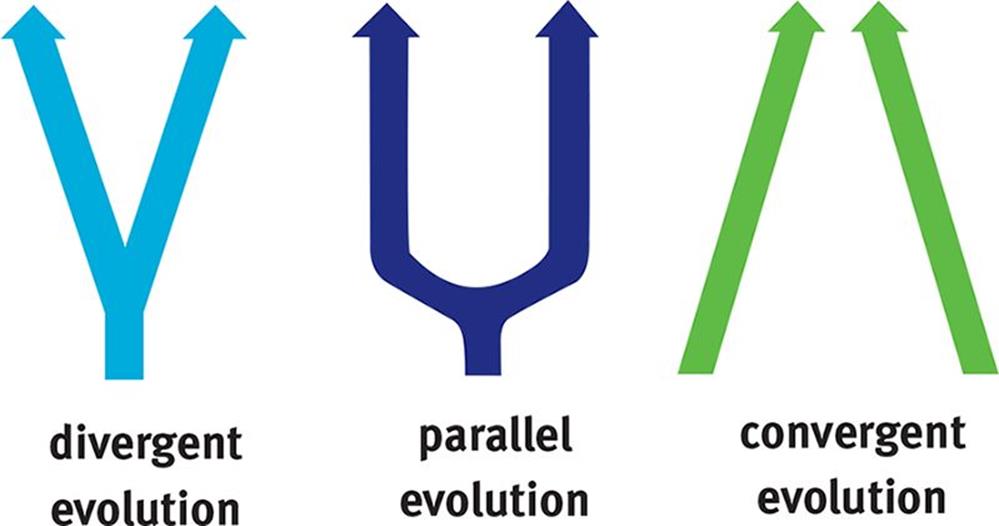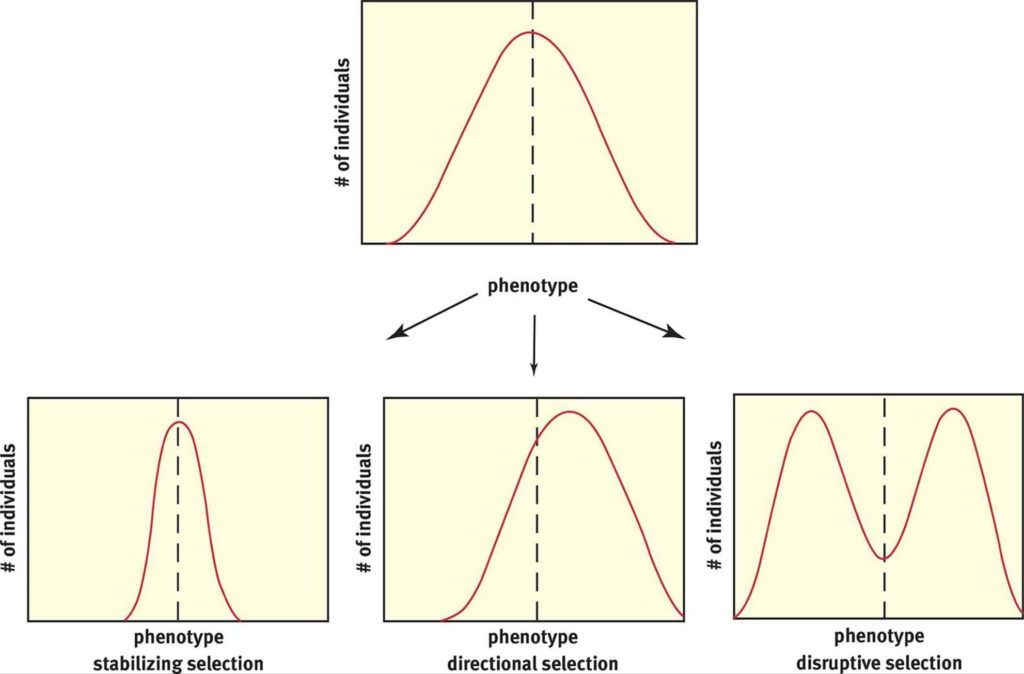Introduction
Stabilising selection
Directional selection
Disruptive selection
Adaptive radiation
Introduction
Evolution could happen evenly over time, or in bursts. The latter option is called punctuated equilibrium. Darwin’s perspective was that of evolution as a continuous process over time, but Eldridge and Gould proposed the theory of punctuated equilibrium.

Diagrams and cladograms are used to show the relationships between species over time. This shows whether they have diverged from a common ancestor, continued in parallel or converged from different ancestors.
As populations accrue different adaptations, their evolutionary journey can be graphed. This reveals patterns of evolution: stabilising, directional or disruptive.

Stabilising selection
Stabilising selection brings individuals closer to the mean of the population. This could show beak length, for example.
Directional selection
Directional selection brings individuals away from the mean, in a “new direction”.
Disruptive selection
Disruptive selection brings individuals…
